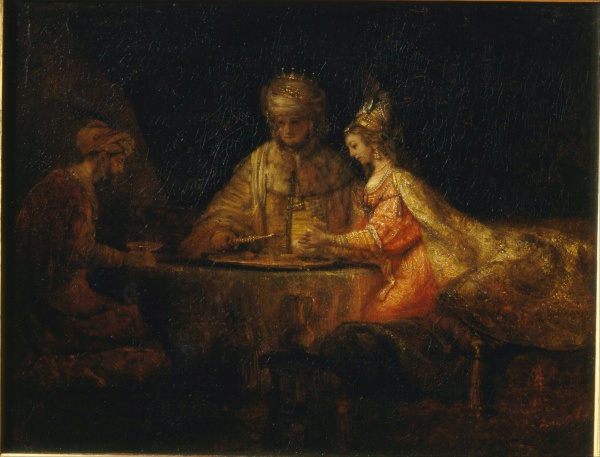Facts About Ahasuerus and Haman at the Feast of Esther
Rembrandt van Rijn's painting, "Ahasveros and Haman at the Feast of Esther" crafted in 1662, is a captivating masterpiece with a rich history. This artwork vividly depicts a scene from the Old Testament's Book of Esther, where the malignant Haman conspires against the Jews but is ultimately outwitted by the courageous Queen Esther.
What makes this painting particularly compelling is how Rembrandt captures the intense emotions and spiritual depth of the characters. The tension is palpable, conveyed through their expressions and postures. Rembrandt drew inspiration from Johannes Serwouters' play "Hester" which likely helped him infuse the painting with such dramatic intensity.
Completed in 1660, the painting was initially sold to Jan J. Hinlopen. Over the years, it has passed through various collectors, each recognizing its unique beauty and significance. Since 1924, it has been housed in the Pushkin Museum in Moscow, where it continues to be admired by art enthusiasts from around the globe.
The painting is celebrated not only for its historical and religious importance but also for its demonstration of Rembrandt's exceptional skill in portraying human emotion and conflict. Its journey through various collections and its eventual home in a renowned museum underscore its lasting appeal and significance in the art world.

 Azerbaijan
Azerbaijan